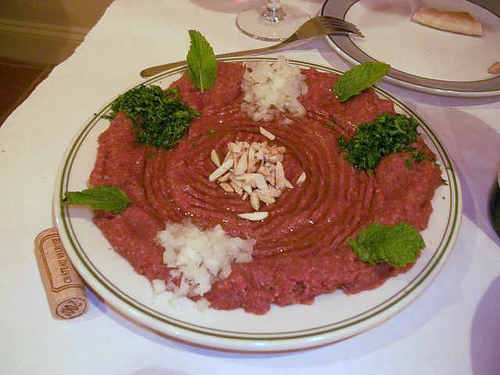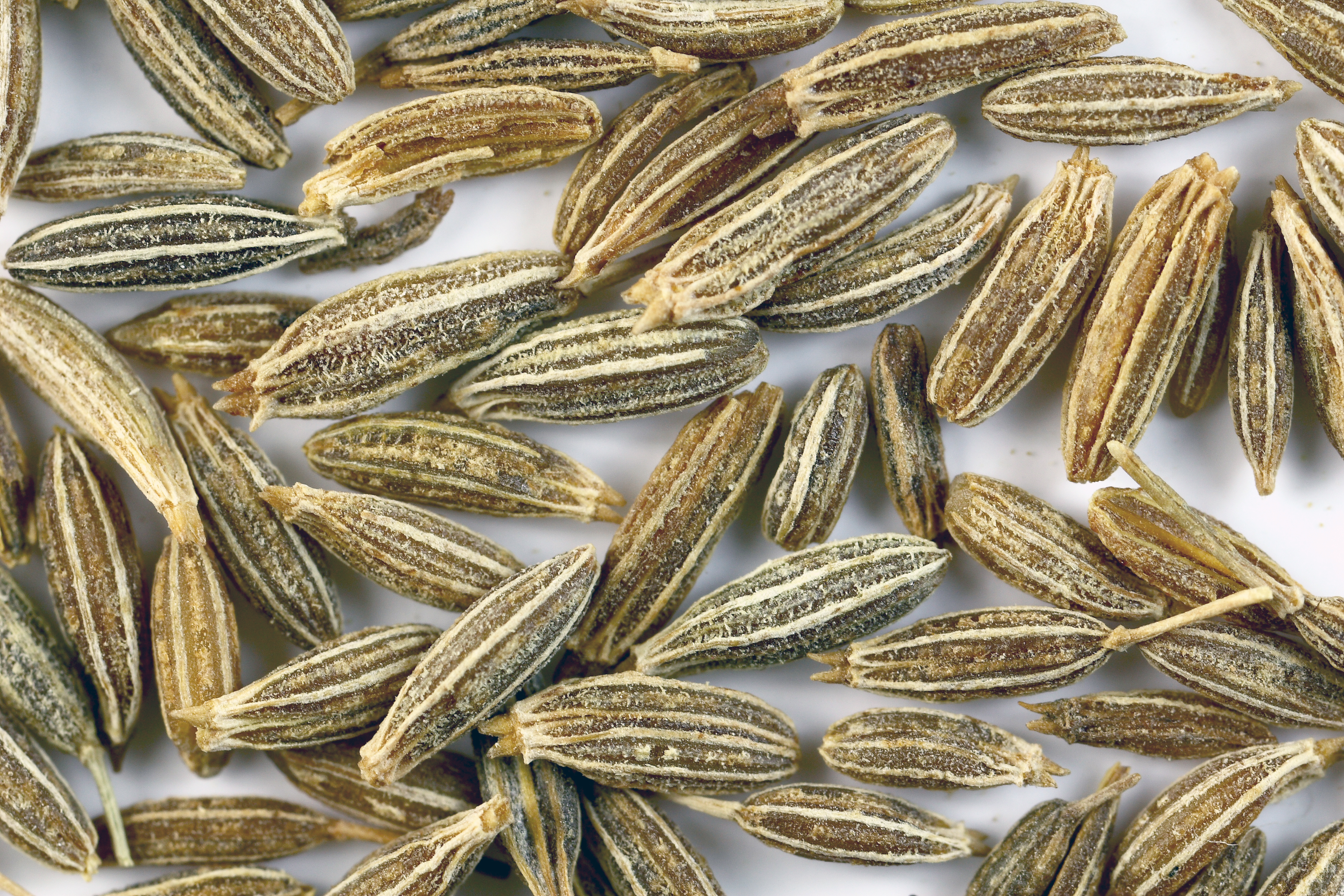|
Niter Kibbeh
''Niter kibbeh'', or ''niter qibe'' ( '), also called (in Tigrinya), is a seasoned, clarified butter used in Ethiopian and Eritrean cuisine. Its preparation is similar to that of ghee, but ''niter kibbeh'' is simmered with spices such as ''besobela'' (known as Ethiopian sacred basil), koseret, fenugreek, cumin, coriander, turmeric, Ethiopian cardamom (korarima), cinnamon, or nutmeg before straining, imparting a distinct, spicy aroma. The version using vegetable oil instead of butter is called ''yeqimem zeyet''. See also * List of Ethiopian dishes and foods * Kibbeh Kibbeh (, also kubba and other spellings; ; ) is a popular dish in the Arab world and the Levant in particular based on spiced lean ground meat and bulgur wheat. Kibbeh is considered to be a national dish of Lebanon and Syria. In Levantine ... References External links ''Niter kibbeh'' recipeAuthentic ''Niter Kibbeh'' (Ethiopian Spiced Clarified Butter) recipe Butter Tesmi Ethiopian c ... [...More Info...] [...Related Items...] OR: [Wikipedia] [Google] [Baidu] |
Kitfo
''Kitfo'' (, ) is an Ethiopian traditional dish that originated among the Gurage people. It consists of minced raw beef, marinated in '' mitmita'' (a chili-based spice powder) and '' niter kibbeh'' (a clarified butter infused with herbs and spices). The word comes from the Ethio-Semitic triconsonantal root ''k-t-f'', meaning "to chop finely; mince". ''Kitfo'' cooked lightly rare is known as ''kitfo leb leb''.Mesfin, D.J. ''Exotic Ethiopian Cooking'', Falls Church, Virginia: Ethiopian Cookbooks Enterprises, 2006, pp.124, 129. ''Kitfo'' is often served alongside — or sometimes mixed with — a mild cheese called ''ayibe'' or cooked greens known as ''gomen''. In many parts of Ethiopia, ''kitfo'' is served with '' injera'', a spongy, absorbent sourdough crêpe-like flatbread made from fermented teff flour; traditional Gurage cuisine replaces this with '' kocho'', a thick flatbread made of the ''ensete'' plant. An ''ensete'' leaf may be also used as a garnish. Thoug ... [...More Info...] [...Related Items...] OR: [Wikipedia] [Google] [Baidu] |
Coriander
Coriander (), whose leaves are known as cilantro () in the U.S. and parts of Canada, and dhania in parts of South Asia and Africa, is an annual plant, annual herb (''Coriandrum sativum'') in the family Apiaceae. Most people perceive the leaves as having a fresh, slightly citrus taste. Due to variations in the gene OR6A2, some people perceive it to have a soap-like taste, or even a pungent or rotten taste. It is native to the Mediterranean Basin. All parts of the plant are edible, but the fresh leaves and the dried seeds are the parts most traditionally used in cooking. It is used in certain cuisines, like Mexican cuisine, Mexican, Indian cuisine, Indian and Southeast Asian cuisine, Southeast Asian. Description It is a soft plant growing to tall. The leaves are variable in shape, broadly lobed at the base of the plant, and slender and feathery higher on the flowering stems. The flowers are borne in small umbels, white or very pale pink, asymmetrical, with the petals ... [...More Info...] [...Related Items...] OR: [Wikipedia] [Google] [Baidu] |
Kibbeh
Kibbeh (, also kubba and other spellings; ; ) is a popular dish in the Arab world and the Levant in particular based on spiced lean ground meat and bulgur wheat. Kibbeh is considered to be a national dish of Lebanon and Syria. In Levantine cuisine, kibbeh is made by pounding bulgur wheat together with meat into a fine paste and forming it into ovoid shapes, with toasted pine nuts and spices. It may also be layered and cooked on a tray, deep-fried, grilled, or served raw. The Syrian city of Aleppo can lay claim to at least 17 types of kibbeh. In Mesopotamian cuisine, versions with rice or farina are found. Outside of Syria, versions are found in Cyprus, Egypt, Israel, Palestine, the Persian Gulf, Armenia, and Turkey, and among Assyrian people. It is also found throughout Latin American countries that received substantial numbers of immigrants from the Levant during the late 19th and early 20th centuries, as well as parts of North America. Etymology The word kibbeh firs ... [...More Info...] [...Related Items...] OR: [Wikipedia] [Google] [Baidu] |
List Of Ethiopian Dishes And Foods
This is a list of Ethiopian and Eritrean dishes and foods. Ethiopian cuisine, Ethiopian and Eritrean cuisines characteristically consists of vegetable and often very spicy meat dishes, usually in the form of ''wat (food), wat'' (also ''w'et'', ''wot'' or ''tsebhi''), a thick stew, served atop ''injera'', a large sourdough flatbread,Javins, Marie"Eating and Drinking in Ethiopia." Accessed July 2011. which is about in diameter and made out of fermented teff flour. People of Ethiopia, Ethiopians and People of Eritrea, Eritreans eat exclusively with their right hands, using pieces of ''injera'' to pick up bites of entrées and side dishes. Utensils are rarely used with Ethiopian and Eritrean cuisine. Ethiopian and Eritrean dishes and foods [...More Info...] [...Related Items...] OR: [Wikipedia] [Google] [Baidu] |
Vegetable Oil
Vegetable oils, or vegetable fats, are oils extracted from seeds or from other parts of edible plants. Like animal fats, vegetable fats are ''mixtures'' of triglycerides. Soybean oil, grape seed oil, and cocoa butter are examples of seed oils, or fats from seeds. Olive oil, palm oil, and rice bran oil are examples of fats from other parts of plants. In common usage, vegetable ''oil'' may refer exclusively to vegetable fats which are liquid at room temperature. Vegetable oils are usually edible. History In antiquity Olive oil has been a part of human culture for millennia.Ruth Schuster (December 17, 2014). "8,000-year old olive oil found in Galilee, earliest known in world", ''Haaretz''. Retrieved December 17, 2014. Archaeological evidence shows that olives were turned into olive oil by 6000 BC and 4500 BC in present-day Israel. Pagnol, p. 19, says the 6th millennium in Jericho, but cites no source. In ancient Egypt, plant oils including cedar oil, cypress oil, and ol ... [...More Info...] [...Related Items...] OR: [Wikipedia] [Google] [Baidu] |
Nutmeg
Nutmeg is the seed, or the ground spice derived from the seed, of several tree species of the genus '' Myristica''; fragrant nutmeg or true nutmeg ('' M. fragrans'') is a dark-leaved evergreen tree cultivated for two spices derived from its fruit: nutmeg, from its seed, and mace, from the seed covering. It is also a commercial source of nutmeg essential oil and nutmeg butter. Maluku's Banda Islands are the main producer of nutmeg and mace, and the true nutmeg tree is native to the islands. Nutmeg and mace, commonly used as food spices, have been traditionally employed for their psychoactive and aphrodisiac effects, though clinical evidence is lacking. High doses can cause serious toxic effects including acute psychosis, with risks heightened during pregnancy and with psychiatric conditions. Conifers of the genus '' Torreya'', commonly known as the nutmeg yews, have edible seeds of similar appearance, but are not closely related to ''M. fragrans'', and are not used as a spice ... [...More Info...] [...Related Items...] OR: [Wikipedia] [Google] [Baidu] |
Cinnamon
Cinnamon is a spice obtained from the inner bark of several tree species from the genus ''Cinnamomum''. Cinnamon is used mainly as an aromatic condiment and flavouring additive in a wide variety of cuisines, sweet and savoury dishes, biscuits, breakfast cereals, Snack, snack foods, bagels, teas, hot chocolate and traditional foods. The aroma and flavour of cinnamon derive from its essential oil and principal component, cinnamaldehyde, as well as numerous other constituents, including eugenol. Cinnamon is the name for several species of trees and the commercial spice products that some of them produce. All are members of the genus ''Cinnamomum'' in the family Lauraceae. Only a few ''Cinnamomum'' species are grown commercially for spice. ''Cinnamomum verum'' (alternatively ''C. zeylanicum''), known as "Ceylon cinnamon" after its origins in Sri Lanka (formerly Ceylon), is considered to be "true cinnamon", but most cinnamon in international commerce is derived from four other speci ... [...More Info...] [...Related Items...] OR: [Wikipedia] [Google] [Baidu] |
Aframomum Corrorima
''Aframomum corrorima'' is a species of flowering plant in the ginger family, Zingiberaceae. It is an herbaceous perennial that produces leafy stems 1–2 meters tall from rhizomatous roots. The alternately-arranged leaves are dark green, 10–30 cm long and 2.5–6 cm across, elliptical to oblong in shape. Pink flowers are borne near the ground and give way to red, fleshy fruits containing shiny brown seeds, which are typically 3–5 mm in diameter. The spice, known as Ethiopian cardamom, false cardamom, or ''korarima'', is obtained from the plant's seeds (usually dried), and is extensively used in Ethiopian and Eritrean cuisine. It is an ingredient in '' berbere'', '' mitmita'', ''awaze'', and other spice mixtures, and is also used to flavor coffee. Its flavor is comparable to that of the closely related '' Elettaria cardamomum'' or green cardamom. In Ethiopian herbal medicine, the seeds are used as a tonic, carminative, and laxative. The plant is native to ... [...More Info...] [...Related Items...] OR: [Wikipedia] [Google] [Baidu] |
Turmeric
Turmeric (), or ''Curcuma longa'' (), is a flowering plant in the ginger family Zingiberaceae. It is a perennial, rhizomatous, herbaceous plant native to the Indian subcontinent and Southeast Asia that requires temperatures between and high annual rainfall to thrive. Plants are gathered each year for their rhizomes, some for propagation in the following season and some for consumption or dyeing. The rhizomes can be used fresh, but they are often boiled in water and dried, after which they are ground into a deep orange-yellow shelf-stable spice powder commonly used as a coloring and flavoring agent in many Asian cuisines, especially for curries ( curry powder). Turmeric powder has a warm, bitter, black pepper-like flavor and earthy, mustard-like aroma. Although long used in Ayurvedic medicine, there is no high-quality clinical evidence that consuming turmeric or the principal turmeric constituent, curcumin, is effective for treating any disease. Curcumin, a bright ye ... [...More Info...] [...Related Items...] OR: [Wikipedia] [Google] [Baidu] |
Cumin
Cumin (, ; ; ''Cuminum cyminum'') is a flowering plant in the family Apiaceae, native to the Irano-Turanian Region. Its seeds – each one contained within a fruit, which is dried – are used in the cuisines of many cultures in both whole and ground form. Although cumin is used in traditional medicine, there is no high-quality evidence that it is safe or effective as a therapeutic agent. Etymology and pronunciation The term comes via Middle English ''comyn'', from Old English ''cymen'' (which is cognate with Old High German ''kumin'') and Old French cummin, both from the Latin term . This in turn comes from the Ancient Greek (), a Semitic languages, Semitic borrowing related to Hebrew language, Hebrew () and Arabic (). All of these ultimately derive from Akkadian language, Akkadian (). The English word is traditionally pronounced (), like "coming" with an ⟨n⟩ instead of ⟨ng⟩ (/ŋ/)."Cumin." '' A Way with Words'' (Radio broadcast/podcast). 25 October 2014. Re ... [...More Info...] [...Related Items...] OR: [Wikipedia] [Google] [Baidu] |
Tigrinya Language
Tigrinya, sometimes romanized as Tigrigna, is an Ethio-Semitic languages, Ethio-Semitic language, which is a subgrouping within the Semitic languages, Semitic branch of the Afroasiatic languages. It is primarily spoken by the Tigrinya people, Tigrinya and Tigrayans, Tigrayan peoples native to Eritrea and the Ethiopian state of the Tigray Region, respectively. It is also spoken by the global diaspora of these regions. History and literature Although it differs markedly from the Geʽez (Classical Ethiopic) language, for instance in having phrasal verbs, and in using a word order that places the main verb last instead of first in the sentence, there is a strong influence of Geʽez on Tigrinya literature, especially with terms relating to Christian life, Biblical names, and so on. Ge'ez, because of its status in Eritrean and Ethiopian culture, and possibly also its simple structure, acted as a literary medium until relatively recent times. The earliest written example of Tigriny ... [...More Info...] [...Related Items...] OR: [Wikipedia] [Google] [Baidu] |
Fenugreek
Fenugreek (; ''Trigonella foenum-graecum'') is an annual plant in the family Fabaceae, with leaves consisting of three small Glossary_of_leaf_morphology#Leaf_and_leaflet_shapes, obovate to oblong leaflets. It is cultivated worldwide as a semiarid crop. Its leaves and seeds are common ingredients in dishes from the Indian subcontinent, and have been used as a culinary ingredient since ancient times. Its use as a food ingredient in small quantities is safe. Although a common dietary supplement, no evidence-based medicine, significant clinical evidence suggests that fenugreek has therapeutic properties. Commonly used in traditional medicine, fenugreek can increase the risk of serious adverse effects, including allergic reactions. History Fenugreek is believed to have been brought into cultivation in the Near East. Which wild strain of the genus ''Trigonella'' gave rise to domesticated fenugreek is uncertain. Charred fenugreek seeds have been recovered from Tell Halal, Iraq (radioc ... [...More Info...] [...Related Items...] OR: [Wikipedia] [Google] [Baidu] |






